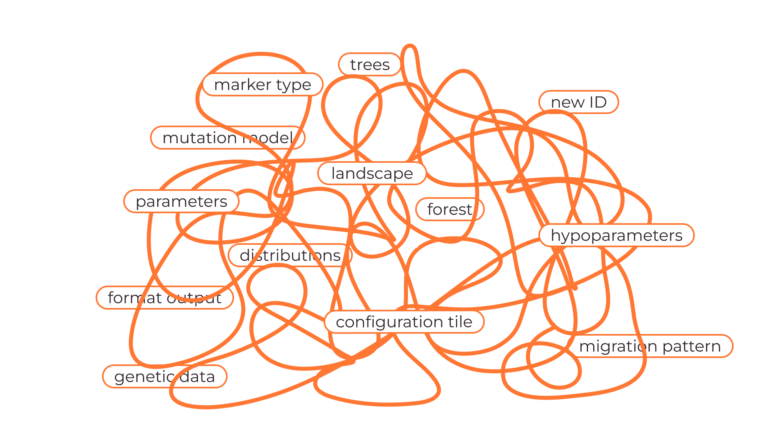 Back to all articles
Back to all articles
When scaling your IT startup, choosing the right tech stack is crucial to ensure efficiency, flexibility, and long-term growth. IT startups usually face scaling issues even before they can join the enterprise world.
The rise in user numbers or plans for future massive growth are common reasons for scalability problems. Another reason is the code that worked in the past may not scale correctly as user numbers increase.
If your software struggles during peak periods, it’s time to rethink strategies and rewrite necessary components. This might involve adopting different technologies or approaches. Conducting an external code review of the old solution can provide valuable insights and identify areas for improvement.
So, how to scale a tech stack efficiently and be ready for enterprise production issues? Let’s take a closer look.
Angular or ReactJS are usually used to develop frontends for enterprise IT projects. Each has its own strengths and is suited to different types of projects and development styles.
Angular heavily relies on Object-Oriented Programming (OOP) for many of its functionalities. Most of its features, such as components, directives, and pipes, are based on classes. OOP concepts like encapsulation, abstraction, inheritance, and polymorphism are integral to Angular development, helping developers build scalable and maintainable web applications.
When to use OOP in Angular
Basically, Angular is best for projects that prioritize structure, scalability, and maintainability, especially for complex applications.
ReactJS, on the other hand, encourages the use of functional programming and a declarative approach to building user interfaces. While OOP principles can be applied in React, it is primarily designed around a component-based architecture.
When to use FP in React
ReactJS is deal for projects that require flexibility, rapid UI development, and benefit from a vibrant community.
Both Angular and ReactJS can use micro frontends, which enhance web development agility and scalability by allowing independent development of application modules. This approach is particularly useful for large and complex web applications that require flexibility and faster iterations.
Backend solution re-factoring or adding a middleware solution that uses the same database?
A bigger issue is if an IT startup backend solution is not up to the task of scaling. Badly written backend is nothing new in the IT startup market. Making it work would be a lot of reverse engineering time spent.
The bare situation of “somebody else has written the code” is becoming a problem in large and complex backends. A new team will not likely take a badly written backend, even if it is scaling properly. No documentation and spaghetti code are enough reasons even from a business perspective to leave the current backend as is and proceed in a different direction.
Backend solution re-factoring or adding a middleware solution that uses the same database?
A bigger issue is if an IT startup backend solution is not up to the task of scaling. Badly written backend is nothing new in the IT startup market. Making it work would be a lot of reverse engineering time spent.
The bare situation of “somebody else has written the code” is becoming a problem in large and complex backends. A new team will not likely take a badly written backend, even if it is scaling properly. No documentation and spaghetti code are enough reasons even from a business perspective to leave the current backend as is and proceed in a different direction.

Middleware solution on a new IP address is always a good idea. One new backend that can take some of the functionality of the old system and make new features that business needs. Larger systems will surely need up to a year to re-work, while making a middleware solution usually doesn’t take longer than six months.
By selecting the appropriate tech stack and following best practices, you can adapt to future growth challenges.
Here’s an overview of popular tech stacks, and how they can help you scale your startup effectively.
Components: Linux, Apache, MySQL, PHP/Python/Go
Advantages:
Use cases: Web applications, content management systems, dynamic websites
Components: Java, Spring Framework, Hibernate, Tomcat/Jetty
Advantages:
Use cases: Complex enterprise applications, financial services, mobile app backends
Components: MongoDB, Express.js, React, Node.js
Advantages:
Use cases: Dynamic web applications, real-time updates, rich user interfaces
Components: Windows Server, IIS, SQL Server, ASP.NET
Advantages:
Use cases: Enterprise-level applications, Microsoft ecosystem integration, high-performance web services

Here are some best practices to consider when preparing your tech infrastructure for future challenges:
Selecting the appropriate technology stack is the foundation of any scalable tech strategy. Evaluate both your current and future needs to ensure the stack you choose can support your growth trajectory. Factors to consider include:
Adopting a microservices architecture can significantly enhance scalability and maintainability. This approach involves breaking your application into smaller, independent services, each responsible for a specific functionality. Benefits include:
Automation and monitoring are essential for maintaining the health and performance of your tech stack. Implementing continuous integration and continuous deployment (CI/CD) pipelines can streamline your development and deployment processes. Key practices include:
Optimizing your database is critical for ensuring efficient data handling and performance. Depending on your data requirements, you may need to choose between SQL and NoSQL databases. Best practices include:
Using cloud platforms can provide the flexibility and scalability needed to support your growing startup. Cloud services offer various managed solutions that can reduce operational overhead and streamline your infrastructure management. Consider the following:
By following these tips, you can build a resilient and scalable tech stack that supports rapid growth and adapts to evolving business needs. Embracing the right technologies, architectures, and strategies will ensure your tech infrastructure is robust, efficient, and prepared for future challenges.
With over 2 decades of experience in scaling enterprise hardware and software, Setronica is your trusted partner for robust, scalable solutions. Need one? Contact us via the form below to book a free call.

